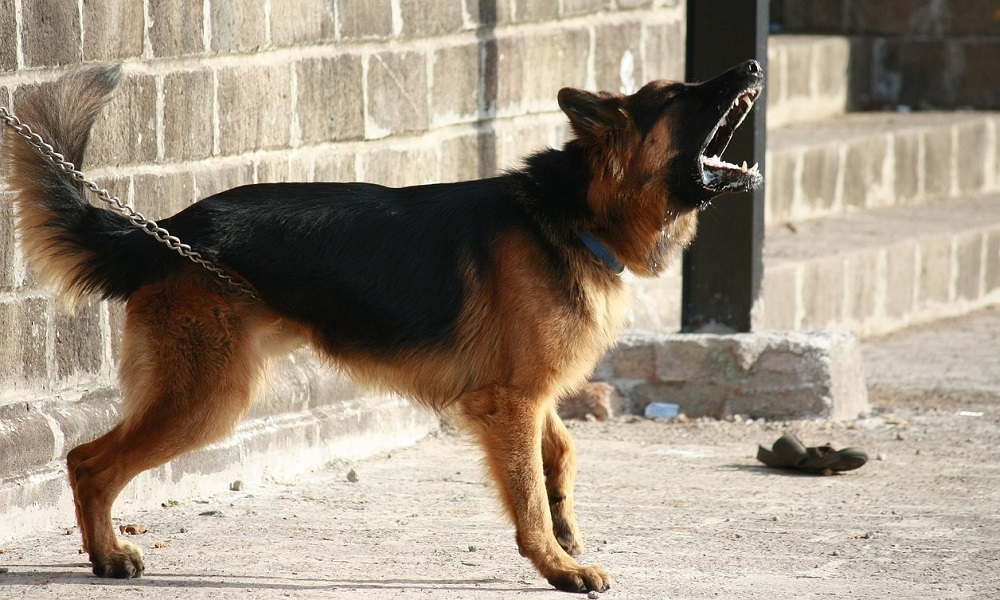Dog barking is a natural behavior, and it is your pet’s way of communicating. However, it can certainly be a bother to your household and neighbors when it gets out of control. The key to solving this problem is by finding out the reason behind the barking. In the next step, you train your pet to overcome those issues.
The most common issues behind barking are a lack of attention or a feeling of being threatened. In either case, you need to let your pet know that he’s listened to and cared for. This training to stop a canine from barking and howling requires no extra tools or pet gadgets. All you need is a list of proper steps and the patience to go through the entire process with ease.
If your pet is simply being mischievous, direct his energy towards some kind of sports or toys, so he doesn’t need to bark for everything. However, if your pet is being aggressive, you need to let him know that this behavior is not good. This guide will list the various reasons for barking and how you can stop your pooch from showing this behavior.
Why Does My Dog Bark at Strangers?
Many pet owners complain about how their dog begins to bark at strangers whenever they are out for a walk or leave their dog in the yard to play. This is an expected behavior shown by most dogs; however, you need to find the reason behind this.
Knowing the reason allows you to come with a proper plan to correct this behavior because, in the end, your focus should be on your furry friend’s well-being and finding what is bothering him.
Note Your Pet’s Reaction to Strangers:
When canines bark, they either want the person to go away or are excited to see him. The difference between the two types of bark can be noticed in body language. In case of feeling threatened, you will find that your pet is getting in his defensive mode.
This will involve a certain change in his physical appearance; the ears appear more alert, the tail is stiff, and breathing is controlled. If you see these signs, it means your pet is clearly upset with the stranger either due to less socialization or some bad experience in the past. It could also be that your pet feels threatened and is barking to show dominance.
However, if your pet is wagging his tail and barking excitedly, he might just be happy to see the stranger. In such cases, it is not a big problem, and you can get your pet to calm down fairly quickly.
Other reasons behind barking can be common ones, such as if your canine lacks exercise or attention. In the case of young puppies, they need their share of love and lots of exercise. Some dogs tend to bark at almost anyone simply because they are bored. Depending on the reasons, you can now decide whether your pet’s barking is a serious case or is it his casual way of communicating.
Is Dog Barking a Problem?
Dog barking is likable to some extent; it shows your pet is excited and is trying to communicate with you. However, when the constant barking is becoming a bother, it needs to be dealt with. Dogs bark for various reasons, sometimes because they feel threatened and other times when they are just feeling mischievous.
The latter is not problematic and can be stopped using simple training and other methods to distract your pet; these may include toys, treats, and more attention. However, if your pet exhibits aggressive behavior, this can be due to their health or emotional problems. If the reason behind your canine’s barking is fear, then it points towards some sort of mistreatment in the past.
When your dog constantly barks at strangers, it becomes difficult for him to socialize as such pets also tend to pick a fight with other dogs. The result is that the owners have to use training collars and crates. When you cannot let your dog outside, it has adverse effects on his mental and physical health. To avoid this, you need to make sure that your pet overcomes his fear and needs to show dominance. Only then can he make friends with other people and pets.
Therefore, if you notice that your pooch is getting aggressive over the mere sight of unknown people, it will most likely turn into a problem. Once you find this out, the next step is to train your pet to stop barking unless he is in actual and inevitable danger. Remember that barking itself is not the behavior we want to discourage. It is the pet’s aggressiveness that makes it all worse.
How to Stop Dogs from Barking at Strangers
Before beginning training to stop your pet from barking, you need to decide on your methods and the level of aggressiveness in your pooch’s behavior.
Find Why Your Pet Barks
If your pet tends to bark at particularly nothing and loves to run around the house, the barking is not a big problem. It’s just your canine’s way of showing his excitement and can be treated with ease.
However, if there is aggressiveness in his behavior, look back and see if you can find something that became the first trigger. Does your pooch bark at just anyone, or is it a specific person? Dogs have sensitive hearing and may even respond to certain sounds. Once you have a rough idea of that, we can now move on to the solution part.
Reward Good Behavior
One of these methods is called positive reinforcement training. Much opposite to the punishment method, you reward your pet when he does something you wanted him to. In this case, the action would be to “not bark at random strangers.” You can award your pet by using treats, his favorite toys, or by showering affection; it depends on your pet’s preferences. The key is to keep the timing spot on. When you keep repeating that, your pet will soon pick up on what’s getting him the appreciation.
Ignore Excessive Barking
When your pet is barking, do nothing. Don’t get angry with him, don’t yell, and don’t show any sort of reaction. If this is your pet’s way of getting you to do something for him, he will have to learn that this approach is no longer useful. If your pet is causing damage, then you’ll certainly have to stop him but other than that, show no signs of giving attention.
As soon as your pet stops barking, give him praise along with the treat. Remember to stop if the canine is barking and only give the treat when he is silent. The timing needs to be perfect. Your pet should have the treat as soon as he quiets down.
This step is long and requires constant effort and a lot of patience. However, once your pet learns this behavior, we can now move to the next step.
Reduce Unnecessary Exposure to Strangers
Pets need proper exercise and walk; therefore, keeping them in the house all the time is not recommended. However, some dogs begin to bark even after seeing people from outside the window. You can reduce this by closing the windows. Keep your pet supervised and avoid letting him outside on his own.
Introduce a Command Along with the Reward
When you notice that your pet is becoming more and more obedient on the being-quiet part, you can now choose a certain word as a command. When your pooch gets used to hearing it, he will soon respond to the command alone, even without the incentive.
This is the final goal, and for that, it is recommended to increase the intervals for giving the rewards. Just like the previous step, your timing needs to be accurate, so your pet can easily identify exactly what has gotten him the reward.
During the training, make sure to not react when your pet is barking. Furthermore, if your pet is feeling scared in the presence of a certain person, be there for him and let him know he is not in danger. Once these points are taken care of, you will notice a considerable change in your pet’s behavior. There is no specific time limit for this training, and it depends on your canine. Such behavioral issues are better dealt with in the early stages.
Some Tips for Aggressive Dogs
Following are some important tips for training aggressive dogs. These pointers will help you make sure the training is consistent and dog-friendly.
- Make sure your pet gets lots of exercises. Barking shouldn’t be his way of expending his energy. Teach him to use it in playing instead.
- Don’t yell at your dog, especially if he is barking. Dogs howl or bark, usually when they want attention or some response. When you yell at your dog, he gets a response that can further reinforce his barking habit. Therefore it is important to ignore your pup at that time.
- Learn the reason behind his barking and use the necessary tools to get him to stop. You can also use certain training collars and leashes to keep your pet in check.
- For very aggressive dogs, pet owners can also use special collars that use a very minimal electric current to startle your pet and keep him from barking. While this is not dangerous for your pet, it is still recommended to use these as a last resort.
- You can also ask for help from a friend to play the role of the stranger. This approach can help your canine get on better terms with other people and become more friendly.
Conclusion
Dog barking can be a problem when your pet is at it all day long. Many pet owners find it a bother, and the same goes for the neighbors. However, instead of punishing this behavior, you can find better, pet-friendly alternatives.
A positive training method to encourage good behavior is proven to be better. When using these methods, you find exactly what is bothering your pet, and then the issue is resolved by reinforcing good habits and reducing exposure to whatever causes your pet discomfort.
Many dogs bark at strangers because of a lack of socialization as a puppy. Just like your pet’s physical health and exercise, it is important to care of his social life as well. When your pet is feeling threatened or excited, he will let it out by barking. By simply learning about your pet’s behavior and changing his environment a little, you can stop your canine from showing such behavior.
Frequently Asked Questions
What does it mean when a dog barks at people?
When your pooch is barking at people, it can mean a lot of things. He may be feeling threatened in the presence of strangers due to bad past experiences. On the contrary, if he is used to receiving treats from strangers, he might be excited to see them.
Some pets do that because they have received positive feedback in the past. To stop your pet, you need to encourage quietness by using an incentive. It is recommended to get to know your pet’s reasons before training him.

